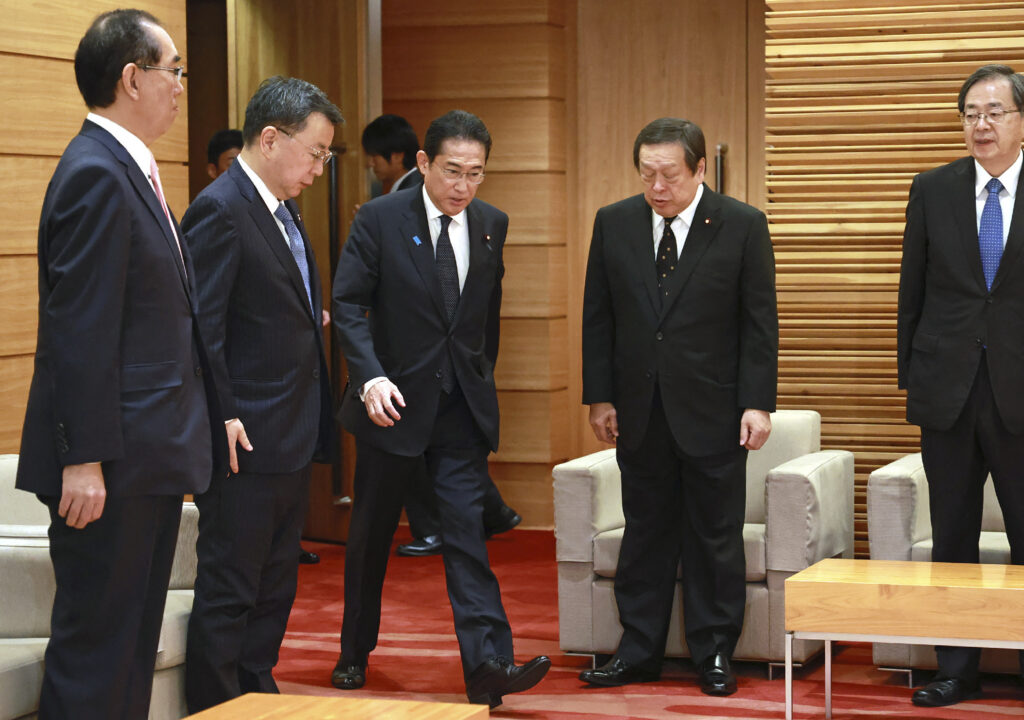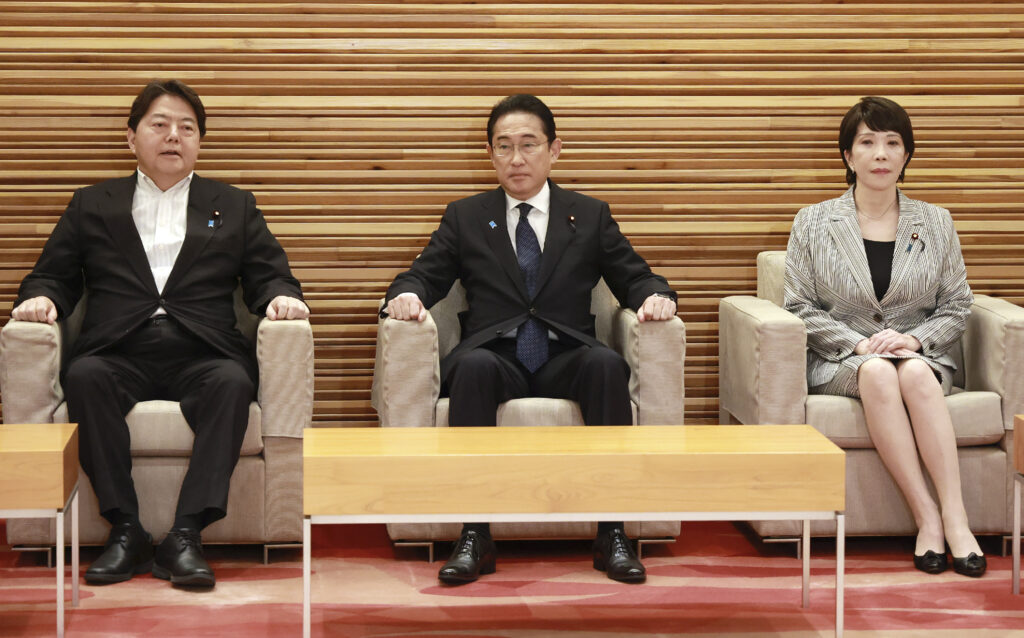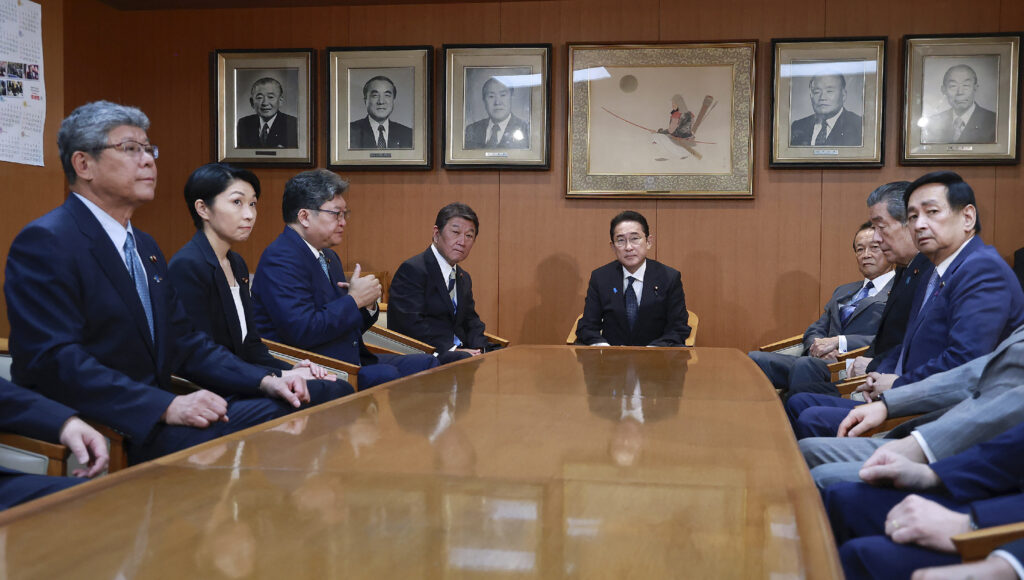





TOKYO: Japanese Prime Minister KISHIDA Fumio reshuffled his Cabinet on Wednesday and the biggest “casualty” in the lineup was the exit of Foreign Minister HAYASHI Yoshimasa after two years in the post.
While Kishida is generally seen as a middle-of-the-road politician in the Liberal Democratic Party – with a general election expected within the year, observers believe he has to appease his more conservative colleagues to keep his position.
Hayashi was seen as “too moderate” by some of his colleagues – especially in his dealings with China – and has been replaced by KAMIKAWA Yoko, who ordered the execution of 16 prisoners while serving as Justice Minister.
Some expected Hayashi to be retained as Foreign Minister and even make a bid for the top job – one of his ambitions – especially after moving from the Upper House of Parliament to the Lower House two years ago.
Kamikawa’s appointment might improve Kishida’s conservative credentials in his bid to stay as Prime Minister, but it will do the same for Kamikawa.
Kamikawa is seen as a steady hand in Kishida’s faction of the LDP and has previously served as Minister in Charge of Measures to Deal with the Declining Birthrate and Minister in Charge of Official Document Management.
She has been seen as a possible candidate to become Japan’s first female Prime Minister and her new appointment may make her one of the most likely candidates to succeed Kishida.
Kishida places importance on diplomacy, as seen at the G7 Hiroshima Summit, and needs a strong, trustworthy Foreign Minister.
Japan’s Foreign Minister needs to handle issues firmly and with a sense of purpose, something perhaps that Hayashi lacked. Japan must deal with North Korea, which has repeatedly launched missiles toward Japan, the invasion of Ukraine by Russia, and China, which has imposed a total embargo on Japanese marine products in response to the release of contaminated water from its damaged nuclear power plant in Fukushima.
Hayashi, who served as president of the Japan-China Friendship Parliamentary Federation, was seen as being pro-China and a US think tank said that the Chinese Communist Party has been using the federation for political manoeuvring against Japan and some LDP conservatives took a dislike to Hayashi’s friendliness with Chinese officials.
Kamikawa heads up a joint-record five female ministers in an effort to try and attract female voters and she is expected to add substance to Japan’s diplomacy, seen as one of Kishida’s weak points.
Kamikawa graduated from the University of Tokyo and also studied at Harvard Graduate School. She previously worked for a think tank and as a policy-making staff member for the United States Senate.
KIHARA Minoru was appointed as Defense Minister and is seen as another hawk in the Cabinet. Kihara, from Kumamoto Prefecture, was first elected to the House of Representatives in 2005 after graduating from Waseda University and working for Japan Airlines. He was previously Parliamentary Secretary for Defense.
Popular politician KONO Taro has been retained as Digital Affairs Minister despite problems with Japan’s My Number social security system that has hit Kishida’s popularity. While Kono is not one of Kishida’s favorites, he believes it is important to maintain continuity in the post and Kono’spopularity with the general public could be a positive for Kishida in the upcoming election.
Following is the lineup of Japanese Kishida’s new cabinet:
Prime Minister: KISHIDA Fumio, 66
Internal Affairs and Communications Minister: SUZUKI Junji, 65
Justice Minister: KOIZUMI Ryuji, 70
Foreign Minister: KAMIKAWA Yoko, 70
Finance Minister: SUZUKI Shunichi, 70
Education, Culture, Sports, Science and Technology Minister: MORIYAMA Masahito, 69
Health, Labor and Welfare Minister: TAKEMI Keizo, 71
Agriculture, Forestry and Fisheries Minister: MIYASHITA Ichiro, 65
Economy, Trade and Industry Minister: NISHIMURA Yasutoshi, 60
Land, Infrastructure, Transport and Tourism Minister: SAITO Tetsuo, 71
Environment Minister: ITO Shintaro, 70
Defense Minister: KIHARA Minoru, 54
Chief Cabinet Secretary: MATSUNO Hirokazu, 61
Digital Transformation Minister: KONO Taro, 60
Reconstruction Minister: TSUCHIYA Shinako, 71
National Public Safety Commission Chairman: MATSUMURA Yoshifumi, 59
Regional Revitalization Minister: JIMI Hanako, 47
Economic Revitalization Minister: SHINDO Yoshitaka, 65
Economic Security Minister: TAKAICHI Sanae, 62
Minister for Policies for Children: KATO Ayuko, 44
*With JIJI Press